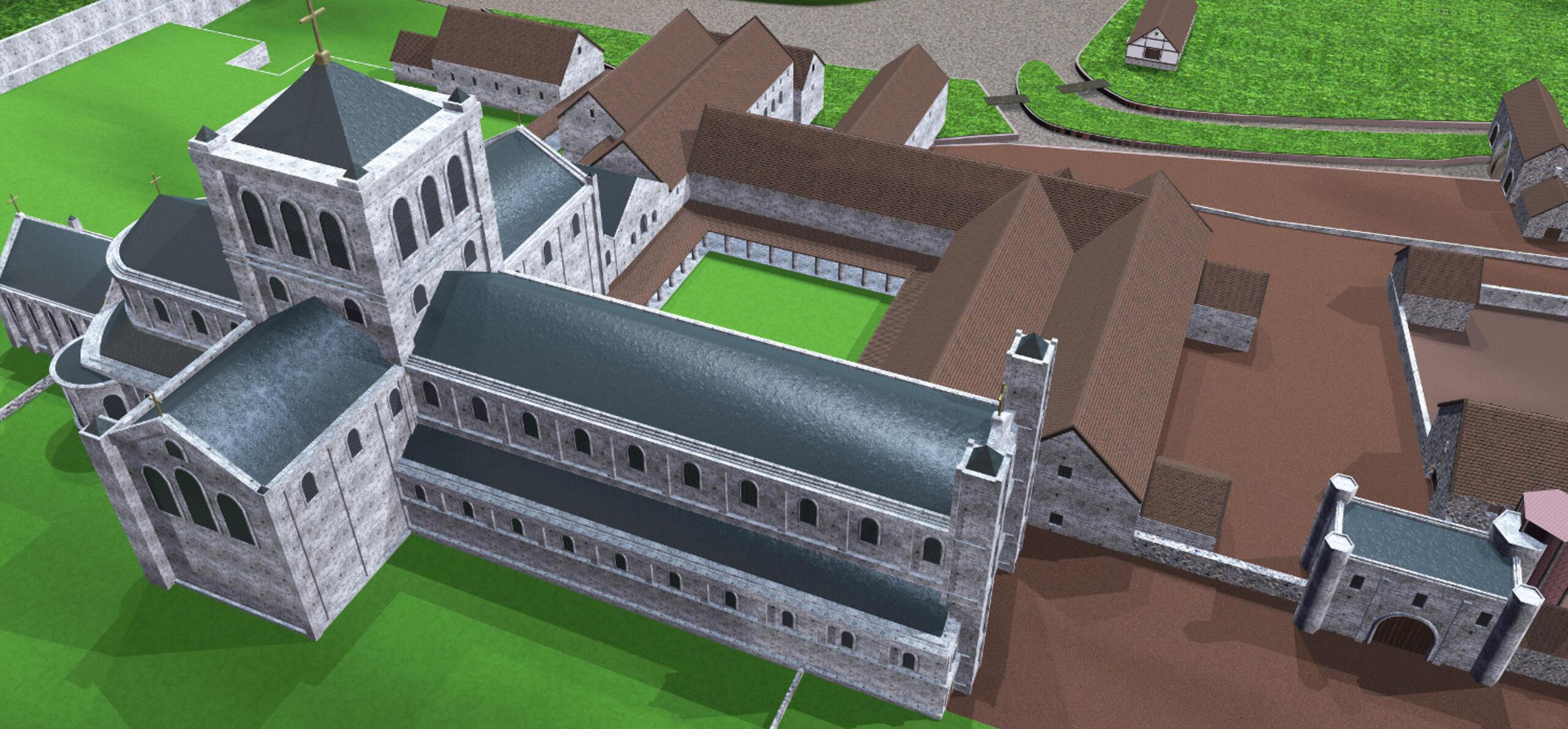Over the past year we have created a new digital model of Reading Abbey to show how it looked in its heyday before the dissolution by King Henry VIII in 1539. We have used the model to provide images to interpret the abbey's remains for our visitors.
This work by Reading Museum was part of the wider Reading Abbey Revealed project that was launched by Reading Borough Council in 2010 to develop and conserve the Abbey Quarter. A key part of the project was creating new signage and interpretation across the Quarter including the new Story of Reading Gallery at the Museum, 27 information panels to explain the history of the Abbey Quarter and interpret the Abbey Ruins installed in June 2018 and an online interactive map of the Quarter.
All these new interpretation elements required updated reconstruction illustrations to indicate what the abbey looked like until 1539. In our public consultations a lot of people wanted reconstruction images to help show the size and scale of the original abbey precinct. A digital model was the most flexible and cost-effective way of providing the still-images for the interpretation graphics and website. The other advantage of a virtual model is that it can easily updated in the light of future archaeological, architectural and historical discoveries about the abbey's layout and appearance.
The original model was then adapted in 2019 for Sketchfab by Luca Ottonello, funded by Arts Council England as part of Museums Partnership Reading (see link at the bottom of this page).
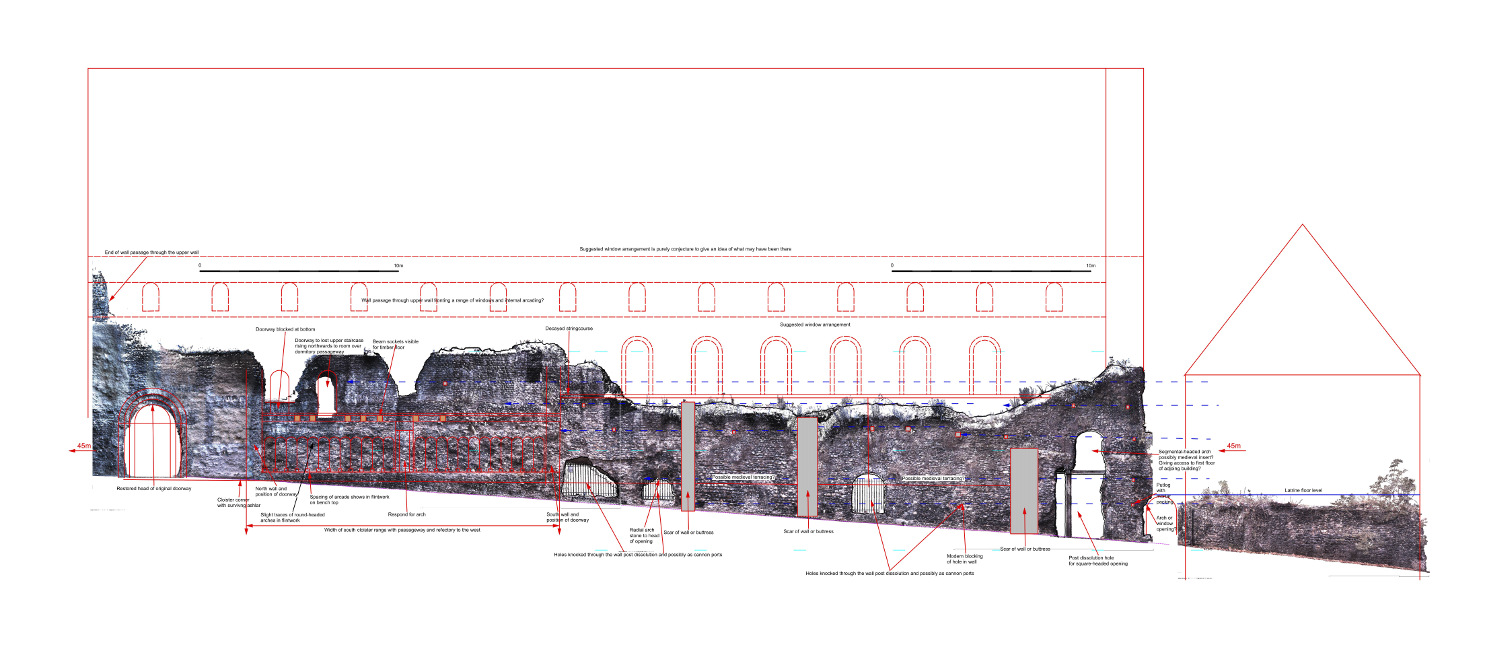
Survey of the abbey dormitory's west wall showing its original size and features
The starting point
First we gathered together as much information as possible about the abbey's layout and buildings from previous archaeological reports, illustrations, plans, maps and photographs. As part of the conservation works the project had also commissioned Rydale Archaeology to provide new interpretative surveys of the standing ruins. Rydale had done some previous CAD digital modelling work, particularly on the abbey church, that was drawn into the new model. Our model maker 0732 Design Studio first created a new baseline plan of the abbey precinct. This was then adjusted after on-site surveying to ensure it accurately fitted the site's typography and surviving remains.
From this accurate base plan the individual buildings could then be created from our current knowledge of their appearance. In some parts of the abbey precinct we had very little archaeological or historical evidence for either the appearance or the exact location of some structures, so we had to extrapolate information from similar monastic sites to create our best guess in these areas. This was particularly the case for the abbot's house and the west end of the abbey church.
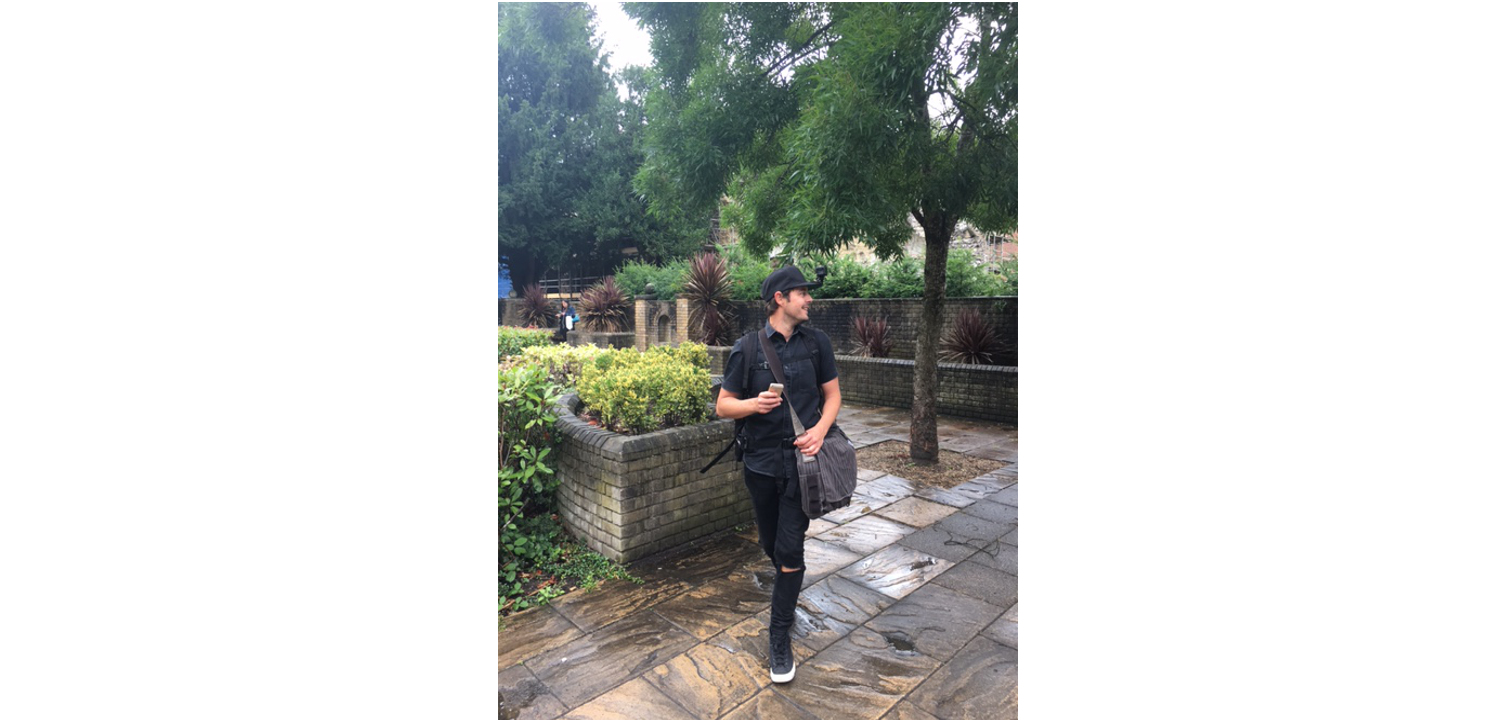
Surveying the abbey site
The reconstructions
Below are a series of stills taken from the new 3D digital model that give an idea of the size and scale of the abbey just before its dissolution in 1539:
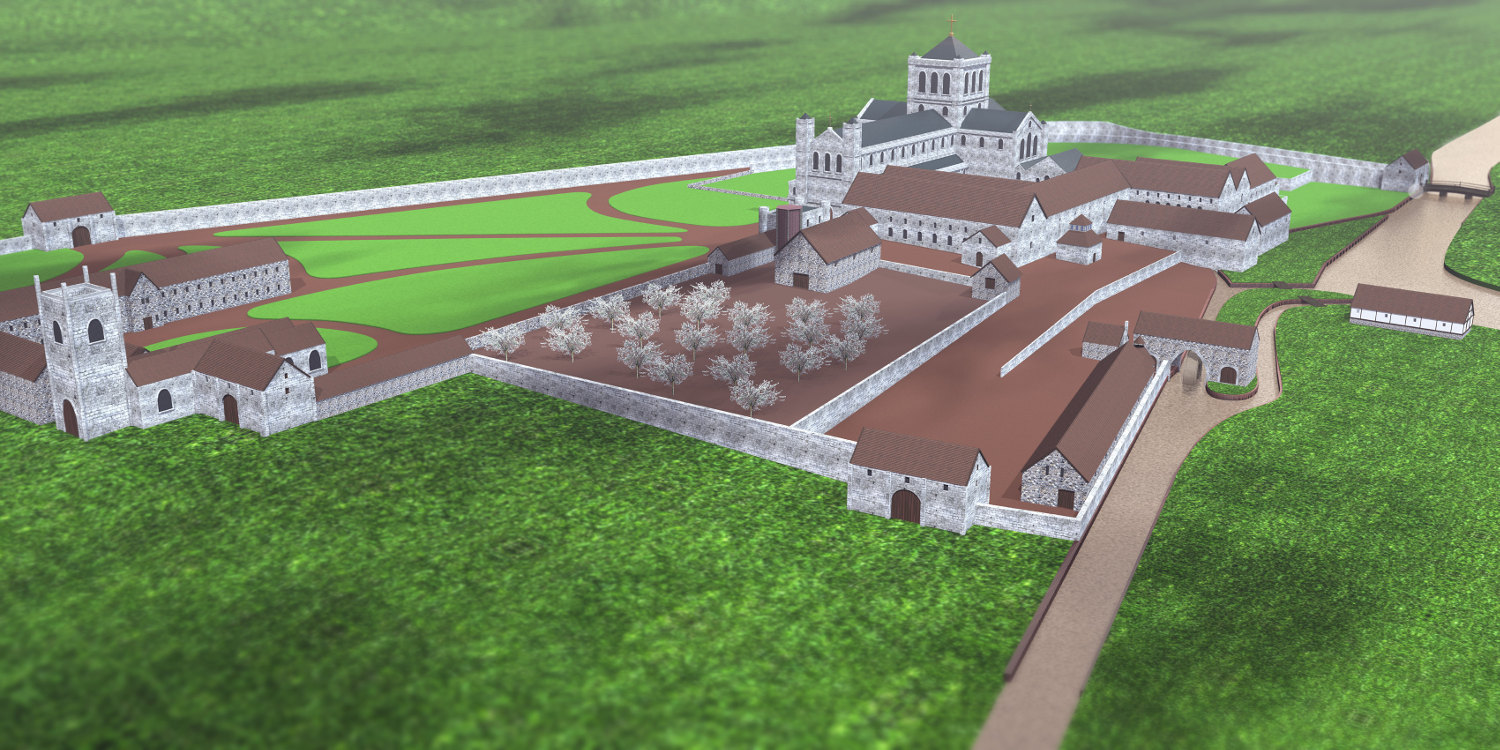
The abbey precinct looking east towards the abbey church with the south gate and stables in the bottom right

The abbey precinct looking west over the cloister and abbey church towards St Laurence's church
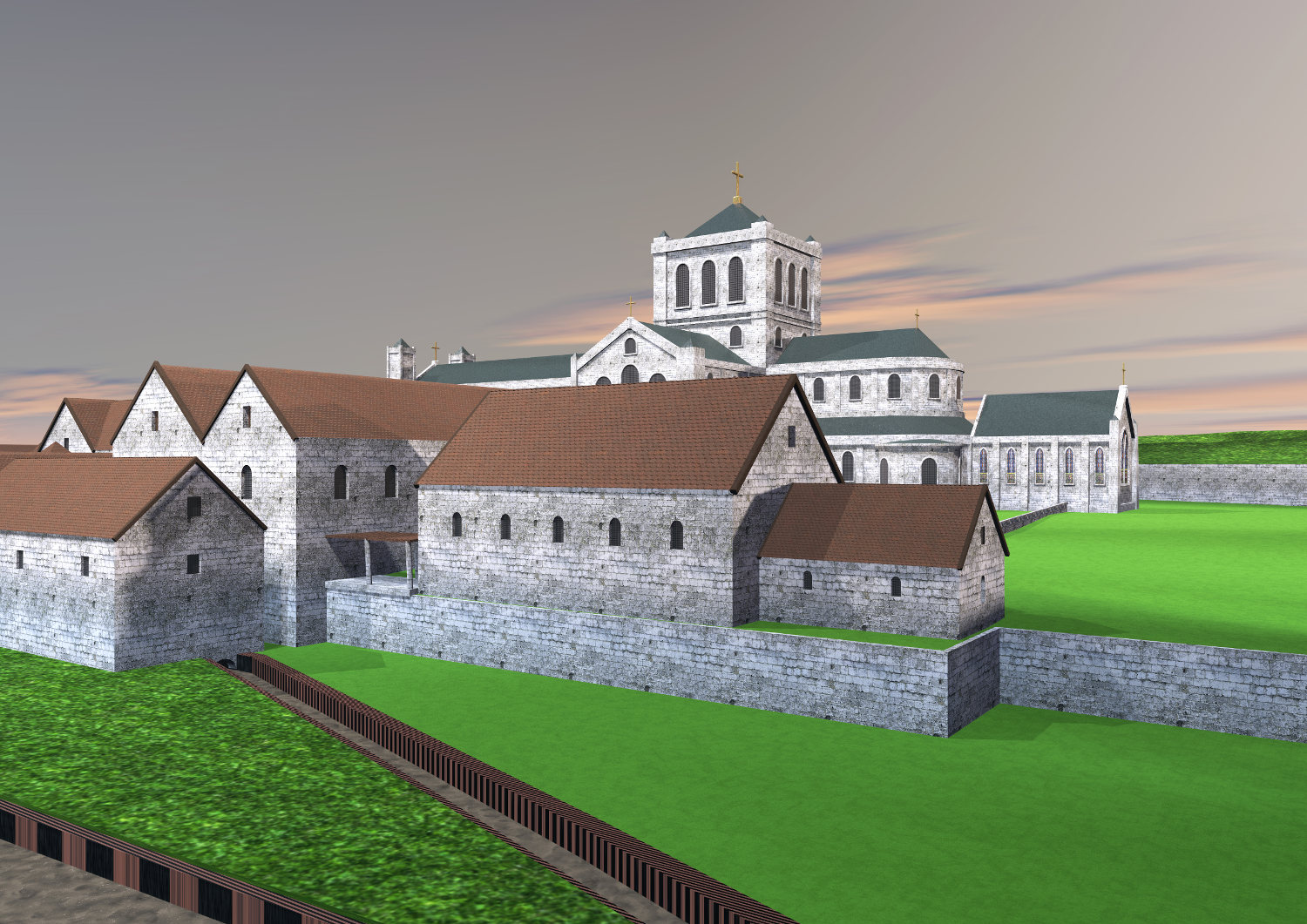
The abbey infirmary looking north towards the abbey church
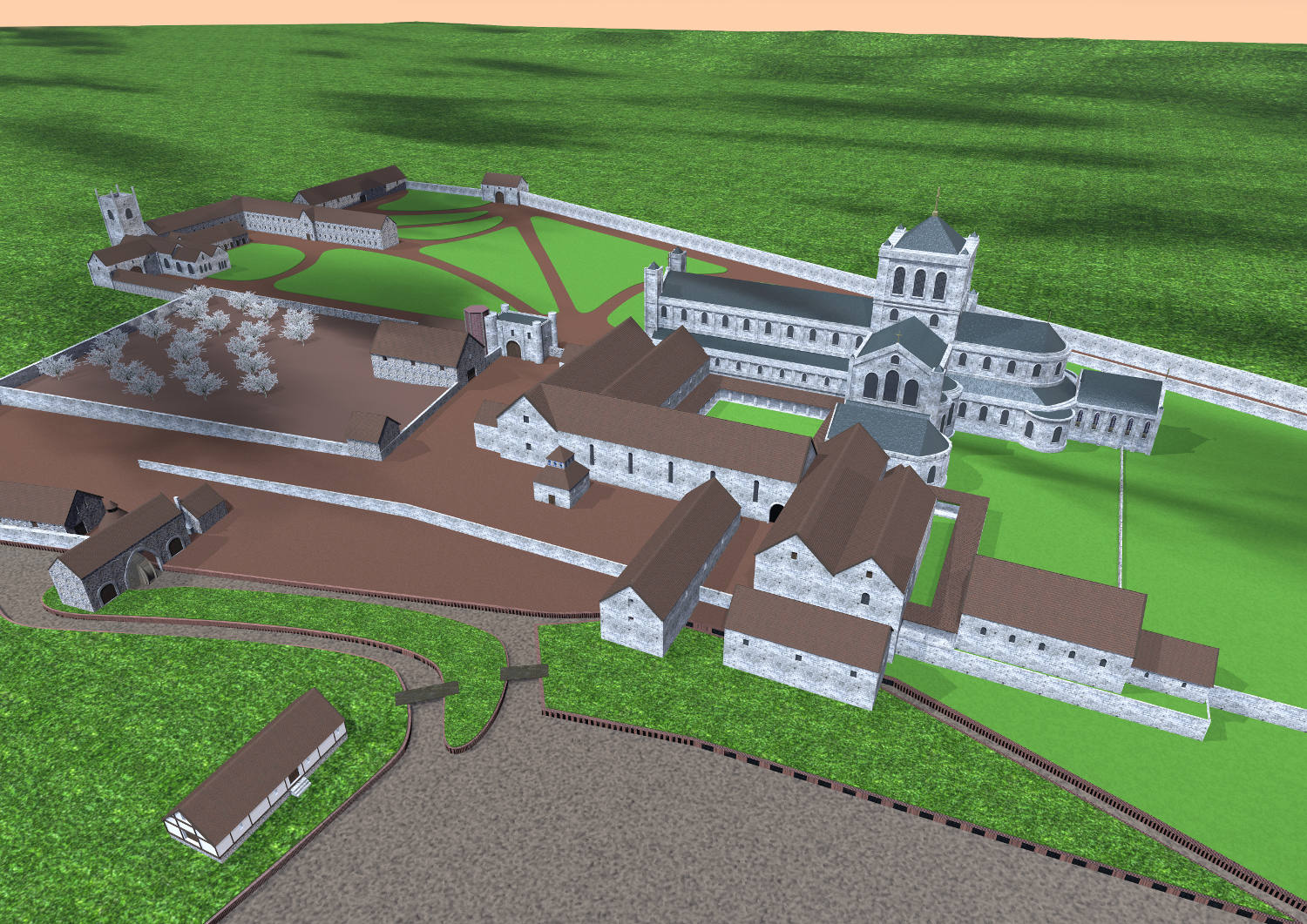
Bird's eye view of the precinct looking north, with the River Kennet, monk's toilet block and the domestic buildings in the foreground
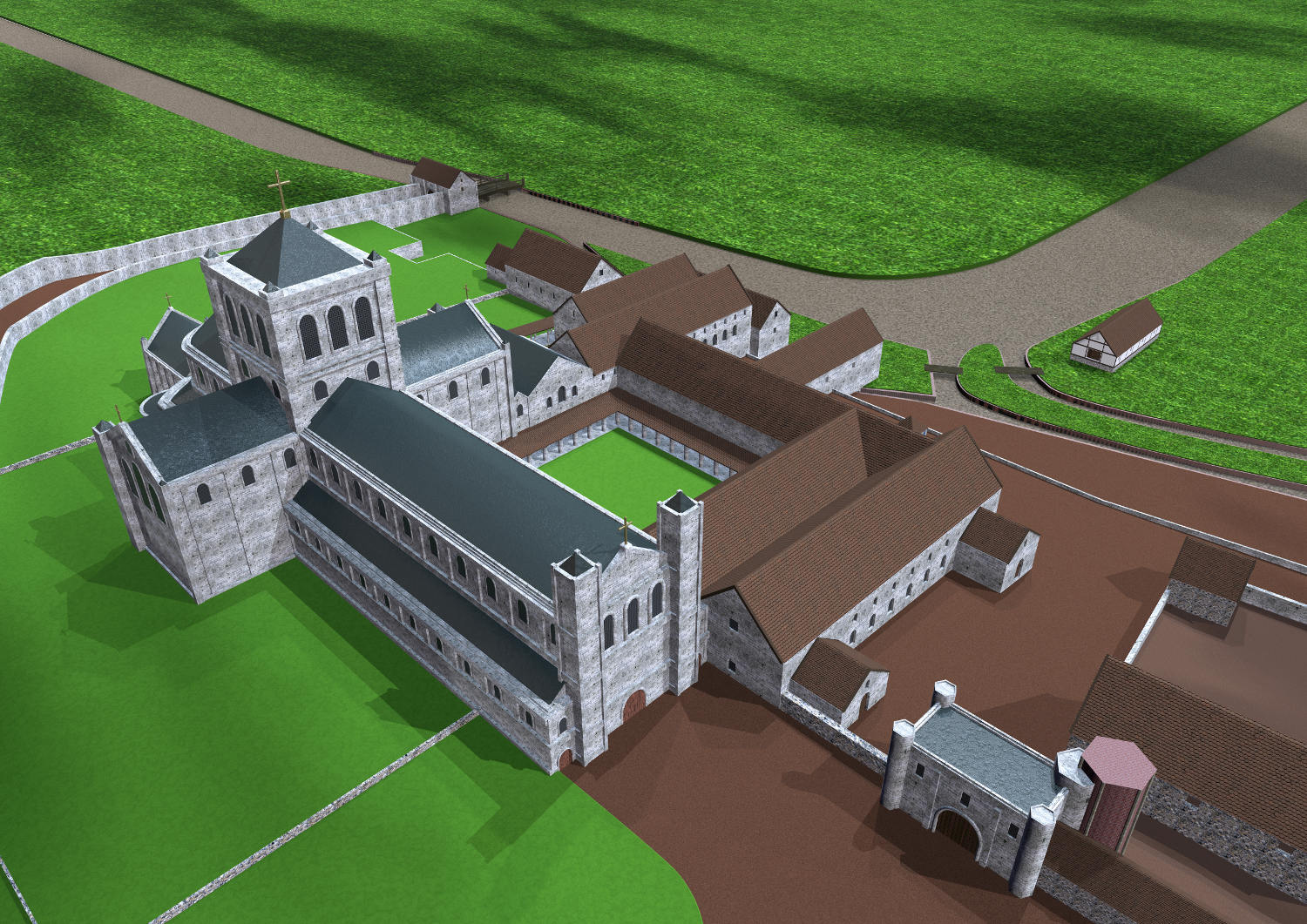
Aerial view of the abbey church, showing the inner gateway giving access to the domestic quarters
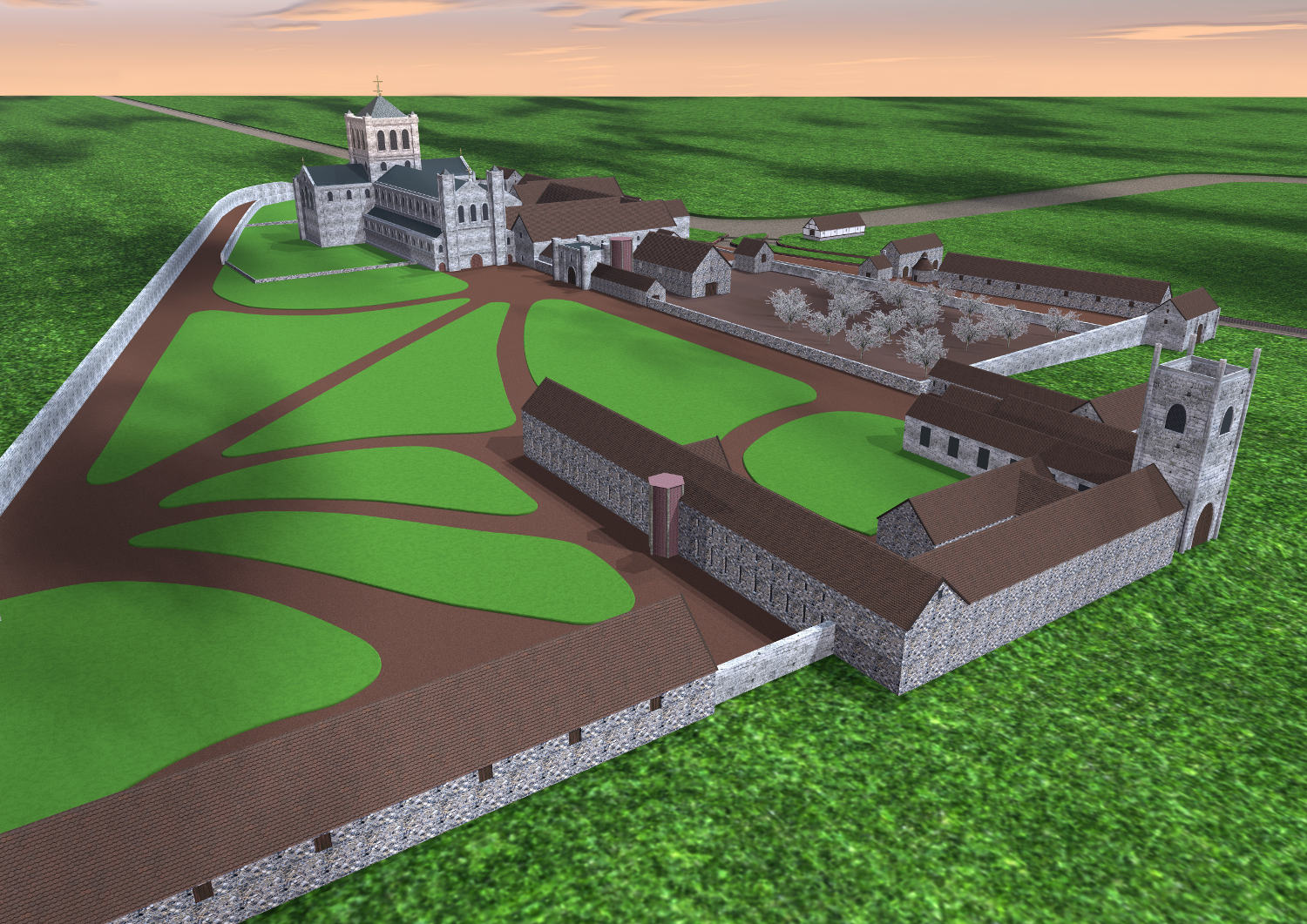
Bird's eye view of the precinct looking east over the hospitium (guest house) and the Forbury towards the abbey church
The final model!
The original model (above) was adapted in 2019 for Sketchfab by Luca Ottonello, funded by Arts Council England as part of Museums Partnership Reading.
